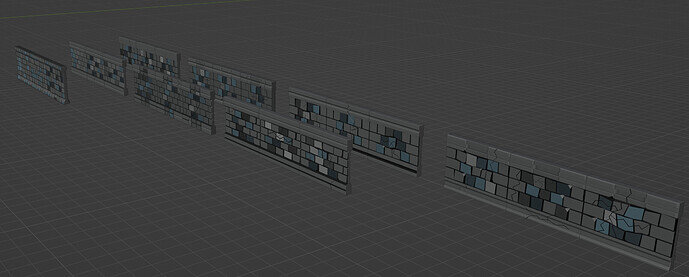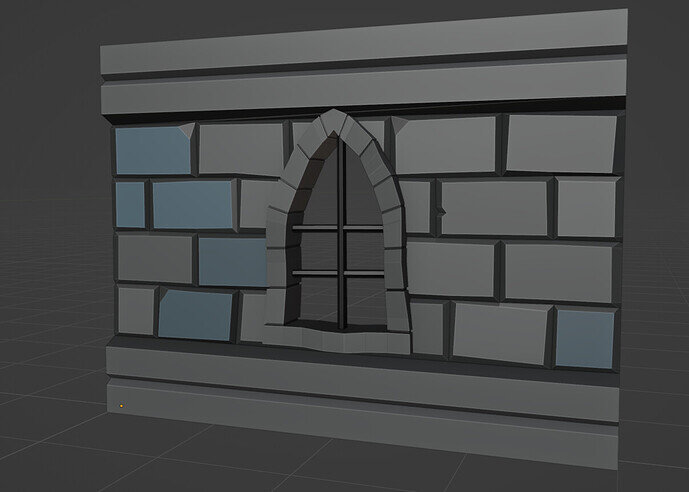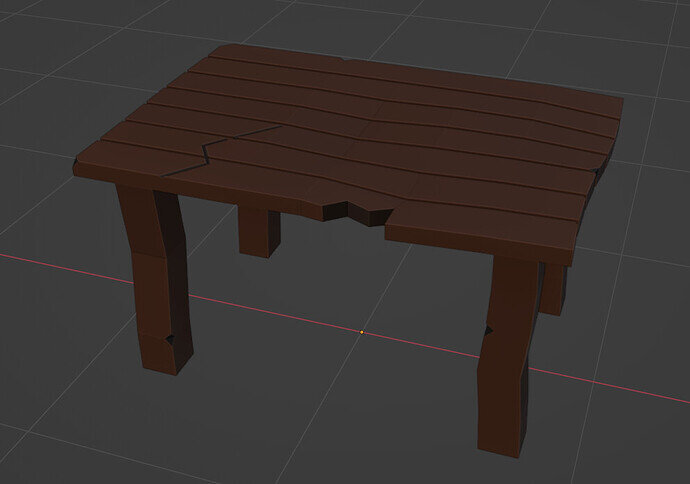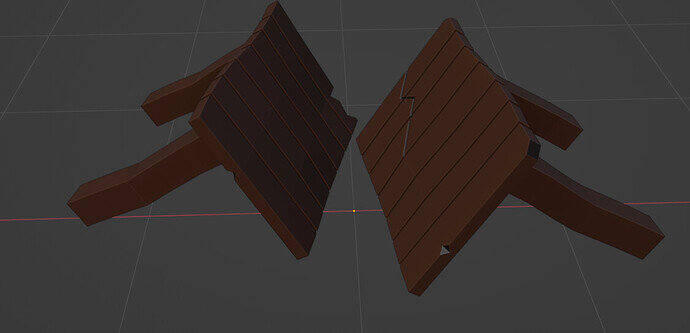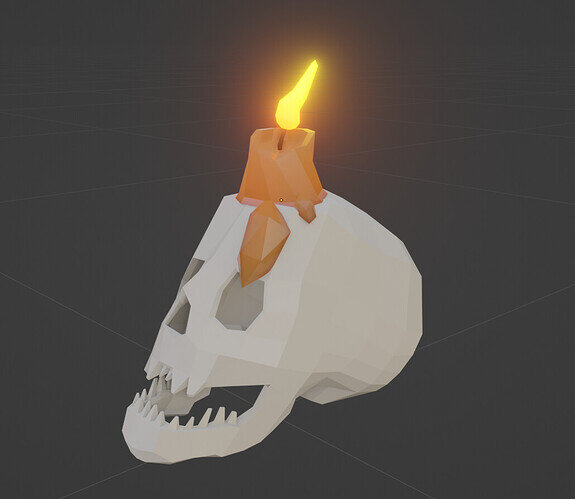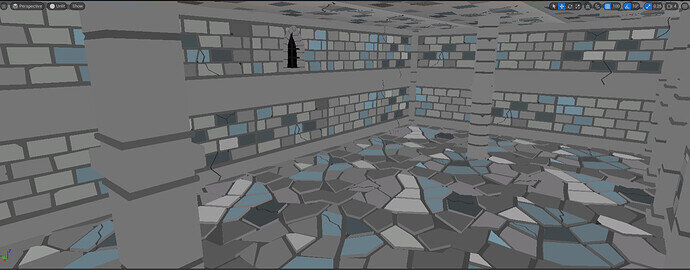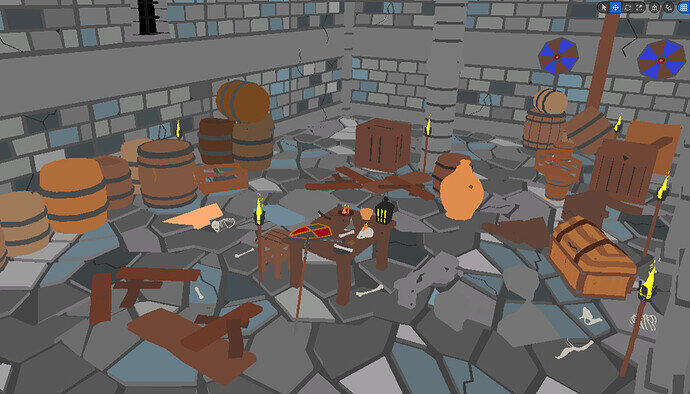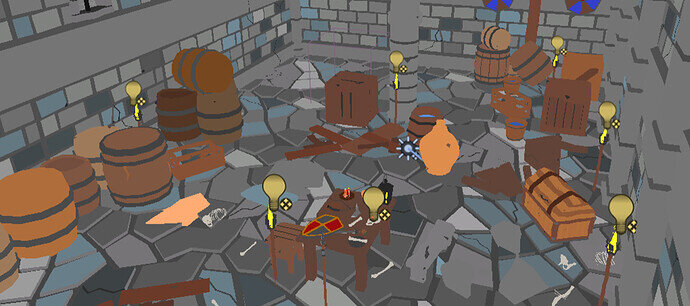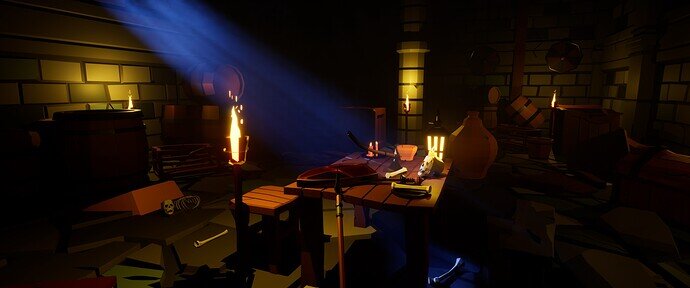Update time! First thing first, I fixed all the walls.
And than I diverged from my plan to work on 2022 Collab: Week 18 “Low poly art style game props" - CLOSED
[Details=Here are the details of some of the new props]
I’ve added a window:
A table:
And I broke it ![]()
Next, I’ve broken my skeleton to some parts:
And made a candle out of it!
[/details]
[Details=I took it to unreal to create the room]
Showing in unlit mode, the room is very simple:
I added props to the room:
And last, but not least - lighting and composition. The emissive materials finally in unreal can emit light, but it wasn’t enough to illuminate the scene. So not only sun (or rather moon) was required, but also additional lights everywhere:
I was running out of time so I had not enough time to really work on composition. So I basically took a few shots and asked ![]() Blender Courses channel for help. I got some help and feedback there, esp. I sent my thanks to unimportant (user name).
Blender Courses channel for help. I got some help and feedback there, esp. I sent my thanks to unimportant (user name).
[/Details]
And here is the final render:
[Details=Some lessons were learnt…]
- Even best plans will crumble in face of bugs. I was planning to finish ‘architecture’ part by ~Wed and do lot’s of props. So that I would have whole Sat for preparing final render. It’s not a new lesson for me… but I keep being reminded about it on every project

- When working only in Blender it’s much easier. And I’m not talking about just moving data between different applications. More about that game engines are much more unforgiving and will show any little mistake you make. Plus you have different shaders to worry about, different lighting model and in general different ways of doing things.
- Contradicting the above - having the ability to “play” (run in real time around the level) is super cool.
- Night scenes are hard. Night scenes with volumetric lighting are super hard. Real time night scenes with volumetric lighting are extremally hard. And even new Unreal’s global illumination solution (Lumen) don’t help that much here.
- Low poly is fun

[/Details]
And I recorded a short video from that room:
